They carry quite the lofty title: “HOA Governing Documents.” When you buy a home in a managed community, whether it’s included in a condo community or a single-family home development, you are asked to read and agree to these documents.
Reading them is beyond a snore; understanding them enough to know whether or not you agree with them is challenging.
We suggest that our clients run the document package by their attorney if they have any questions about any one of them.
In the meantime, let’s see if we can clear up some of the most confusing documents and terms that you’ll be asked to read and agree with.
What is an HOA reserve?
The HOA collects dues or fees every month from each homeowner. A portion of these funds is set aside in a “reserve” account to cover unexpected expenses. Examples of these expenses include spending reserve monies to repair a leak in the community’s clubhouse roof or to replace a faulty pump in the swimming pool.
Reserve funds are separate from operating funds. The latter are spent on routine expenses, such as landscape maintenance in the common areas.
Every few years, the association should conduct a reserve study to forecast how much money they should have in the reserve fund. This study is conducted by experts and each homeowner should know the figure that is determined.
Most professionals agree that an HOA’s reserve funds should be no less than 70 percent of the reserve study’s recommendation.
What are special assessments?
When reserves are inadequate to fill a need, the association may levy a special assessment to cover the shortfall.
For instance, after a heavy storm, homeowners begin complaining of roof leaks. The condo community’s roof is at the end of its life and sustained too much damage from the storms to be repaired. It must be replaced.
The reserves are underfunded, so the HOA will go to the homeowners to get the money for the new roof.
What is the CC&Rs?
One of the most important documents you’ll receive when buying a home in a managed community is the HOA’s CC&Rs, short for “Declaration of Covenants, Conditions and Restrictions.”
What is included in this document dictates the rights and obligations of the homeowners governed by the HOA. The documents may include a description or diagram of the boundaries of the common areas and each unit.
It is also in these documents that you will learn how the HOA deals with enforcement of the rules, how it resolves disputes.
If the association doesn’t use a Rules and Regulations document, you may find the rules of the community within the CC&Rs.
The governance of the HOA corporation belong in the HOA bylaws, not the CC&Rs.
Rules and Regulations
Not all HOAs have a separate Rules and Regulations document. It is used primarily to manage the use of the common areas. For instance, there may be a schedule for swimming pool use.
They may also dictate how the homeowners can use their property, such as landscaping restrictions, paint color restrictions, pet restrictions and parking rules.
These are not suggestions, but rules, and anyone buying a home in the community must agree to abide by them. This is why it is so important to read all the documents. The last thing you need is to find out after you buy a home that you can’t live in it the way you had hoped.
Why did I receive Association Meeting Minutes?
One of the most informative parts of the HOA documents package are the HOA meeting minutes. Here you’ll learn about common complaints and how the association deals with them.
Not only will they tell you a lot about the people who live in the community but also how well the association runs.
For instance, if the meeting minutes reflect homeowners’ continued pleas for rules enforcement, it’s a sign there may be problems with the association.
Living in a managed community isn’t for everyone. In the plus column, a well-run homeowners association helps maintain property values. Depending on the board, however, an HOA can become tyrannical and intrusive.
It’s all in the documents. Read them before you agree to live there.





